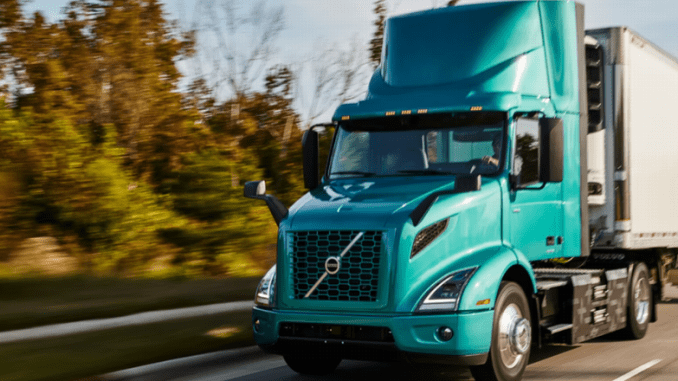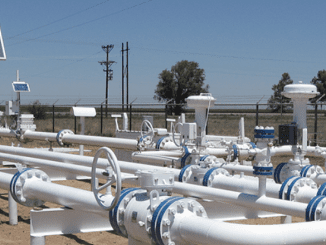
BOSTON, Massachusetts, January 7, 2022 (ENS) – To reduce transportation emissions and accelerate the adoption of zero-emission vehicles, the Massachusetts Department of Environmental Protection has filed emergency regulations with the Secretary of the Commonwealth’s office to immediately adopt California’s Advanced Clean Trucks regulation. This requires an increasing percentage of ZEV truck sales starting with Model Year 2025 and ramping up through Model Year 2035, accelerating the market for medium- and heavy-duty ZEVs.
State officials say the move will help reduce emissions of nitrogen oxides (NOx), toxic air contaminants, and greenhouse gases from on-road vehicles.
“Reducing emissions from trucks will help support public health by improving air quality, reducing the risk from exposure to toxic diesel pollution, and reducing emissions that contribute to climate change,” said Energy and Environmental Affairs Secretary Kathleen Theoharides.
The filing of the emergency regulations begins a three-month process towards making the emergency regulations permanent, which will include a public hearing on the amendment set for February 1, and a public comment period which ends on February 11.
Massachusetts law requires the Commonwealth to adopt California motor vehicle emissions standards as long as those standards achieve, in the aggregate, greater emissions reductions than federal standards.
Massachusetts first adopted the California Low Emission Vehicle program regulations in 1991 and has amended it many times to remain identical to the California LEV program. This latest amendment involves emission standards for Model Years 2025 and later medium- and heavy-duty vehicles and engines.
“The transportation sector accounts for about 40 percent of the total greenhouse gas emissions statewide. Adopting California’s regulations will help to reduce air pollution across the Commonwealth and protect our environment and the public health,” said MassDEP Commissioner Martin Suuberg. “Adoption of these rules will also address environmental justice concerns in communities that are disproportionately impacted by medium- and heavy-duty vehicle traffic.”
Emergency authorization of the regulation was needed as the federal Clean Air Act requires states that adopt the California standards to do so at least two model years before the standards take effect – in this case, January 1, 2022 for vehicles labeled as Model Year 2025, which starts on January 1, 2024.
For more information on the public hearing and comment period, click here. https://www.mass.gov/regulations/310-CMR-700-air-pollution-control#proposed-amendments-public-comment
The emergency regulations adopt the latest revisions to the California medium- and heavy-duty vehicle and engine regulations. In addition to reducing pollutant emissions, the regulations will lead to reduced fuel consumption and fuel costs and maintenance due to more fuel-efficient engines and vehicles and next-generation zero-emission trucks.
MassDEP officials participated in a series of meetings on these rulemakings with the California Air Resources Board and joined CARB, the Northeast States for Coordinated Air Use Management and other organizations to develop the new regulations.
MassDEP also held two public stakeholder meetings in April 2021 to share information on these regulatory efforts and to solicit stakeholder feedback.
Vehicle emissions regulations are part of the Massachusetts plan to maintain air quality standards under the federal Clean Air Act and are a critical component of the Massachusetts Interim Clean Energy and Climate Plan for 2030 under the Massachusetts Global Warming Solutions Act, GWSA.
Earlier this year, Governor Baker signed “An Act Creating a Next-Generation Roadmap for Massachusetts Climate Policy” that amended the GWSA to require specified emissions reduction limits for 2030, 2040 and net-zero greenhouse gas emissions by 2050.
Last year, Massachusetts was one of 15 states and the District of Columbia to set a goal of 100 percent electric truck and bus sales by 2050. Adopting these rules will accelerate the transition to medium- and heavy-duty electric vehicles.
Massachusetts will see many health, climate, and economic benefits of the medium- and heavy-duty rules by 2050, officials say. They calculate health benefits of up to $818 million from avoided premature deaths, hospitalizations for cardiovascular and respiratory illness, and emergency room visits.
Regional medium- and heavy-duty vehicle emission reductions of 51 percent for nitrogen oxides, 23 percent for particulate matter, and 53 percent for GHG, compared with today’s emission levels.
Featured image: Class 8 Volvo VNR Electric truck in production from 2021. The 264-kWh lithium-ion batteries, which charge up to 80 percent within 70 minutes, have an operating range of up to 150 miles. (Photo courtesy Volvo Trucks North America)



